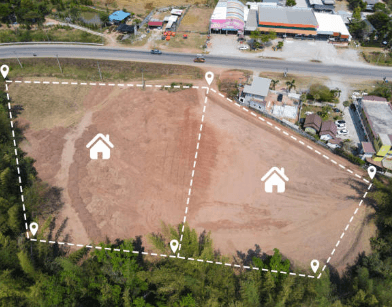What is a variance in zoning, and why does it matter? Zoning laws regulate land use and ensure orderly development within a city or municipality. However, strict adherence to these laws is only sometimes practical or beneficial in some situations. This is where variances come into play, providing a mechanism to address unique circumstances that warrant deviation from established zoning regulations. Read on as we delve into what is a variance in zoning, explore its purpose, and explain the procedural steps involved in obtaining one. Property owners and developers can better navigate zoning hurdles and make informed decisions by understanding these aspects.
Real estate investors like Steve Daria and Joleigh often need help with challenges that make strict adherence to zoning laws impractical. In such cases, variances offer flexibility, allowing them to pursue unique and innovative projects that might not fit conventional zoning categories. By understanding the process for obtaining variances, investors like Steve and Joleigh can effectively navigate these regulatory hurdles to bring their visions to life.
What is a Variance in Zoning?
What is a variance in zoning, exactly? A variance in zoning represents a critical mechanism for property owners looking to navigate the details of land use regulations.
It provides a pathway for deviations from the established zoning requirements governing a particular property.
This deviation is not arbitrary but rather a carefully considered allowance granted by the local zoning board, typically when adhering strictly to the zoning laws, would present undue hardship or practical challenges for the property owner.

Types of Variances
There are primarily two types of variances:
Use Variance
A use variance permits a property owner to utilize their land for a purpose not typically allowed within the zoning district’s regulations.
His variance is sought when the property’s intended use does not conform to the zoning ordinance.
For example, a residential property owner seeking to operate a small business from their home in an area designated solely for residential purposes would apply for a use variance.
Area Variance
An area variance allows property owners to deviate from specific physical or dimensional requirements outlined in the zoning ordinance.
This variance pertains to setbacks, height restrictions, lot size, or building coverage adjustments.
If a property owner wishes to have a building closer to the property line than the zoning regulations allow due to site constraints, they will seek an area variance.
Get An Offer Today, Sell In A Matter Of Days...
Importance of Variances
For anyone involved in real estate endeavors, understanding what is a variance in zoning and its importance is crucial:
Flexibility
Variances are crucial in providing property owners the flexibility to address specific challenges or capitalize on opportunities that may arise with their land use.
By allowing deviations from standard zoning regulations, variances enable property owners to adapt their plans to unique circumstances while ensuring overall compliance with zoning laws.
This flexibility fosters creativity and problem-solving, empowering property owners to use their properties optimally without being hindered by rigid zoning restrictions.
Economic Benefits
The granting of variances can significantly enhance the economic viability of real estate projects by unlocking a property’s full potential for more efficient or profitable use.
For example, variances that permit increased building height or density can maximize a development’s revenue-generating capacity, thereby improving its financial feasibility and return on investment.
Additionally, by facilitating timely and cost-effective development, variances can stimulate economic growth, job creation, and property value appreciation within a community.
Community Development
Variances contribute to community development by fostering innovation and enabling the implementation of projects that address specific needs or enhance public amenities.
By allowing for the creation of mixed-use developments, green spaces, or community facilities, variances can enrich the fabric of neighborhoods and improve residents’ quality of life.
Furthermore, variances supporting sustainable and inclusive development promote long-term community well-being and resilience, creating vibrant and desirable places to live, work, and play.
How to Obtain a Variance in Zoning
Acquiring a variance involves a series of steps:
Step 1: Application
Submit a comprehensive application to the local zoning board, including a detailed project description, architectural or site plans, and justification for the variance.
Step 2: Public Hearing
Attend a public hearing where you present your case for the variance, and community members and stakeholders can voice their support or concerns.
Step 3: Decision
After deliberation, the zoning board decides based on factors such as hardship presented by zoning laws, impact on the community, and consistency with the zoning plan.
Strategies for Success
Securing a variance in zoning can be challenging, but these strategies can improve your chances:
Thorough Preparation
Ensure your application is comprehensive and well-documented, anticipating potential objections.
Community Engagement
Interact with the community early, addressing concerns and demonstrating project benefits.

Professional Assistance
Consider hiring experienced zoning professionals to guide you.
Frequently Asked Questions
This section addresses common queries about zoning variances, helping to clarify their purpose and the process involved.
What are the chances of getting a variance approved?
Approval likelihood varies, but well-prepared applications showing legitimate hardship and minimal community impact have better chances.
Can a variance be revoked?
Yes, a variance can be revoked if conditions aren’t met or significant changes warrant reconsideration.
How long does the variance process take?
Timelines vary, typically taking several months from application to decision.
Conclusion
Understanding what is a variance in zoning is pivotal for successful real estate endeavors. By grasping variance types, importance, and application processes and employing effective strategies, you can unlock property potential while adhering to zoning regulations and contributing to innovative community development.
**NOTICE: Please note that the content presented in this post is intended solely for informational and educational purposes. It should not be construed as legal or financial advice or relied upon as a replacement for consultation with a qualified attorney or CPA. For specific guidance on legal or financial matters, readers are encouraged to seek professional assistance from an attorney, CPA, or other appropriate professional regarding the subject matter.

